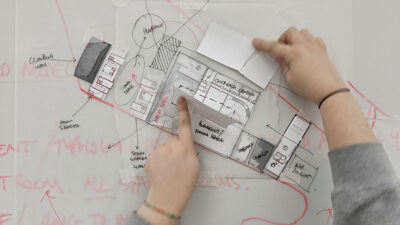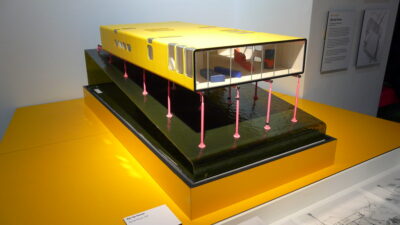From crafting conceptual designs to overseeing construction, an architect’s role embodies versatility, entailing an array of responsibilities that transcend the conventional image of design-oriented tasks. Let’s embark on an enlightening journey through the multifaceted realm of an architect.
Understanding the Architect’s Role
Before the strokes of design commence, meticulous groundwork defines this phase. Architects immerse themselves in in-depth research, dissecting project requisites, encompassing budget, scope, and schedules. Delving into existing site conditions and navigating legal regulations, they assimilate a comprehensive understanding.
Concept Design: The Creative Iterative Process
Designing transcends the mere aesthetic. Architects embark on an iterative journey, sculpting a unifying concept rooted in extensive research. It’s not solely about pretty visuals but a strategic process of problem-solving, testing, and refining ideas against multifaceted project demands.
Design Development and Documentation
Transitioning from concept to reality involves a substantial phase dedicated to meticulous documentation. This intricate process involves translating design into actionable blueprints, considering every facet, from materials to intricate details like tiling layouts or roof compositions.
Coordination: Collaborative Meetings and Integration
Architects navigate a landscape brimming with consultations. Engaging with clients, fellow consultants, and manufacturers, they orchestrate a symphony of meetings, ensuring alignment with regulations and materializing cohesive design integration.
Once the blueprint is set, the construction phase unfurls. Architects traverse the construction site, liaising with builders, troubleshooting issues, and ensuring seamless execution, necessitating quick, precise problem-solving amidst the chaos of construction.
Defects Period: Ensuring Perfection Post-Construction
The journey doesn’t cease at construction’s culmination. Architects vigilantly assess for defects, overseeing rectifications and ensuring the structure’s optimal functionality post-construction, encapsulating a meticulous eye for detail.
Practice Management: The Business Side of Architecture
Beyond design prowess, architects navigate the business realm, managing finances, operations, and client acquisition. This facet entails a diverse skill set encompassing marketing, HR, and business development.
An architect’s scope isn’t bound by singular projects or phases. It varies based on practice size, project scale, and personal inclinations, encompassing diverse roles – from design architects to administrators, reflecting the kaleidoscopic nature of the profession.
The Architectural Process: A Deeper Dive
Architecture embodies a tapestry woven from a multitude of threads, intertwining creativity, technical acumen, and managerial finesse. Architects navigate a labyrinth of complexities, blending artistic vision with pragmatic functionality, thereby sculpting spaces that harmonize with human needs and aspirations.
At its core, architecture fuses creativity with practicality, converging imaginative design concepts with meticulous attention to functionality and structural integrity. The architect’s canvas isn’t limited to mere structures; it extends to creating environments that evoke emotions, serve needs, and narrate stories.
Advancements in technology have revolutionized the architectural landscape. Architects harness cutting-edge software for intricate designs and simulations, streamlining the visualization process and enabling precise documentation, thereby enhancing efficiency and accuracy in project execution.
Sustainability and Environmental Consciousness
In an era emphasizing sustainability, architects bear the responsibility of integrating eco-conscious design practices. They strive to minimize environmental impact by incorporating renewable materials, energy-efficient systems, and environmentally friendly construction methods, thereby contributing to a greener future.
Social Impact and Community Engagement
Architects wield substantial influence in shaping communities. Beyond creating structures, they envision spaces that foster social interaction, inclusivity, and well-being. Community engagement becomes pivotal, ensuring that architectural endeavors align with the diverse needs and aspirations of society.
Unravel the complexities of architecture projects within Design Phases, understanding the intricate stages of architectural creation.
Constant Learning and Adaptation
The architectural realm thrives on evolution. Architects engage in continuous learning, adapting to new trends, regulations, and innovations. Embracing a lifelong learning ethos, they stay abreast of industry shifts, technological advancements, and design philosophies to deliver cutting-edge solutions.
Collaboration and Interdisciplinary Synergy
Architectural projects thrive on collaborative synergy. Architects collaborate with engineers, interior designers, landscape architects, and various specialists, harmonizing diverse expertise to create cohesive, holistic solutions that transcend individual disciplines.
Global Perspectives and Cultural Sensitivity
In an interconnected world, architects navigate diverse cultural landscapes, blending global perspectives with local contexts. Cultural sensitivity becomes paramount, as architects strive to craft designs that resonate with regional identities while embracing global influences.
Conclusion
The architectural journey remains an ever-evolving expedition, beckoning aspirants to embark on a voyage where innovation, creativity, and societal impact converge. Architects, as stewards of space and design, embrace this dynamic realm, sculpting environments that transcend the ordinary, shaping a world teeming with architectural marvels.
As you delve deeper into the realm of architecture, uncover the nuances, and embrace the dynamic landscape, you’ll uncover a world brimming with endless possibilities and opportunities for creative expression and impactful change.











